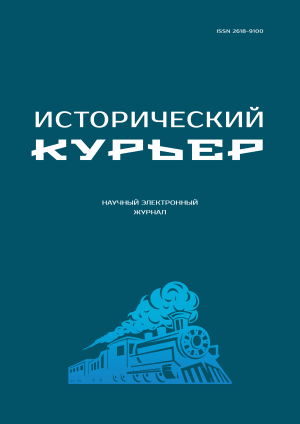Interest in the history of Russian Orthodoxy has remained constant throughout the existence of Russian historical science and professional communities of domestic humanists. Even in the difficult past century for the study of religion, research has been carried out to deepen our knowledge in this area. Despite the declared secularization of all aspects of Russian life, Orthodox traditions determined many manifestations of the existence of Russian society. In recent decades, the development of the historical and church direction of Russian historical science has received a new impetus, leading to the appearance of a significant number of works devoted to various aspects of the life of Russian Orthodoxy and its influence on the most important components of the political, public, social and cultural reality of our past and present.
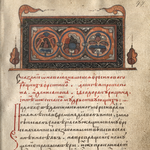 Historiographic Problems of Church History
Historiographic Problems of Church History
A.I. Alekseev
New Works on the History of the Heresy of the Judaizers in the Light of the Textology of Old Russian Literature (Experience of Historiographical Reflection)
The effectiveness and indispensability of textual methods in the study of monuments of ancient Russian literature has been proven by several generations of researchers. The author comes to the conclusion that ignoring the basic methods of textual research, coupled with tendentiousness and bias, lead critics to a lack of evidence. Their argumentation is not supported by the results of textual observations, contains irremovable contradictions in the presentation and, as a result, the presented conclusions are devoid of evidence. It is shown that the reason for the failure of researchers is the refusal to turn to the study of the handwritten tradition of the “Enlightener” (M.V. Pechnikov), and in the work of A.A. Manokhin, where such an appeal took place, the researcher was let down by the use of “mechanistic textual criticism,” which academician D.S. Likhachev warned against.
Publishing: 28/04/2024
How to cite: Alekseev A.I. New Works on the History of the Heresy of the Judaizers in the Light of the Textology of Old Russian Literature (Experience of Historiographical Reflection) // Historical Courier, 2024, No. 2 (34), pp. 13–25. [Available online: http://istkurier.ru/data/2024/ISTKURIER-2024-2-01.pdf]
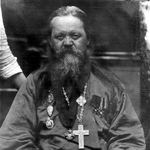 Historiographic Problems of Church History
Historiographic Problems of Church History
S.K. Sevastyanova
Archpriest H.K. Maksimov’s Dissertation “Patriarch Nicon in the Literary Struggle with Paisius Ligarides” and Her Contribution to the Study of Patriarch Niсon’s “Objection”
The author of the article evaluates the literary techniques of Patriarch Nicon noted by Maximov: speaking and thinking in images of the Holy Scriptures, almost verbatim reproducing fragments of handwritten and printed sources, among which in the first place were the products of the Moscow Printing House of the first half of the 17th century and manuscripts from the Patriarch Nicon cell library in Resurrection New Jerusalem Monastery. Maksimov’s contribution to Russian niconology is shown. A conclusion is made about the prospects of a comprehensive study of Patriarch Niсon’s ’’Objection’’ in the inextricable connection of this work with the question-and-answer essay of Streshnev-Ligarid. The author of the article notes: an interdisciplinary approach based on the achievements and methodology of church historical and theological sciences, hermeneutic study and historical-critical assessment of sources, laid down by Archpriest Maximov’s dissertation back in 1877 has not yet been implemented, despite repeated instructions from researchers on the importance of a comprehensive study of the monument.
The research was carried out as part of the Russian Science Foundation project No. 22-28-00153 “Metropolitan of Gaza Paisius Ligarides’ Сomposition about the Patriarch Nicon’s Trial: Translation and Research”.
Publishing: 28/04/2024
How to cite: Sevastyanova S.K. Archpriest H.K. Maksimov’s Dissertation “Patriarch Nicon in the Literary Struggle with Paisius Ligarides” and Her Contribution to the Study of Patriarch Niсon’s “Objection” // Historical Courier, 2024, No. 2 (34), pp. 26–37. [Available online: http://istkurier.ru/data/2024/ISTKURIER-2024-2-02.pdf]
 Historiographic Problems of Church History
Historiographic Problems of Church History
A.A. Brodnikov
Archpriest Dimitriy Evtihiev and the Date of Foundation of the Yeniseisk Monastery of the Nativity of Christ
The article examines the appearance in Yenisei local history of an erroneous date for the formation of the Yenisei Women’s Monastery of the Nativity of Christ in 1623. It has been established that the appearance of this date is associated with activities in Yeniseisk in the early 1860s. Archimandrite Athanasy, and its consolidation – as a result of publication in the 1880s. Archpriest D. Evtikhiev wrote a historical essay about this monastery. Discovered in the collection of G.F. Miller and documentary sources published in 2005 indicate that the monastery was founded in 1653 under governor A.F. Pashkov.
Publishing: 28/04/2024
How to cite: Brodnikov A.A. Archpriest Dimitriy Evtihiev and the Date of Foundation of the Yeniseisk Monastery of the Nativity of Christ // Historical Courier, 2024, No. 2 (34), pp. 38–49. [Available online: http://istkurier.ru/data/2024/ISTKURIER-2024-2-03.pdf]
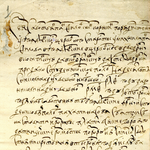 History of Parish Communities of the Russian Orthodox Church
History of Parish Communities of the Russian Orthodox Church
S.A. Nikonov
Contractors of the Epiphany Ukhtostrovsky Parish in the 17th Century
The article deals with the problem of peasant contract on the land of the church parish of the Russian North. The object of the study is the contract for villages and lands (arable and hay) of the Epiphany Ukhtostrovsky church parish of the Dvinsky district of the 17th century. The conclusion of the contract, the fulfillment of duties by the peasants are reflected in the act sources (contract charter) and account books. The article discusses the terms of the contract, the number of contractors, their responsibilities and participation in the social life of the parish.
Publishing: 28/04/2024
How to cite: Nikonov S.A. Contractors of the Epiphany Ukhtostrovsky Parish in the 17th Century // Historical Courier, 2024, No. 2 (34), pp. 50–64. [Available online: http://istkurier.ru/data/2024/ISTKURIER-2024-2-04.pdf]
 History of Parish Communities of the Russian Orthodox Church
History of Parish Communities of the Russian Orthodox Church
Y.A. Znosko, O.N. Kationov
“Comparative Analysis of the Parish and Administrative Accounting of the Parish Population of the Tomsk Diocese in the Early 1890s (On the Example of the Kainsky District of the Tomsk Province)
The article provides a comparative analysis of demographic and statistical sources, such as “Lists of populated places” and clergy registers of the Orthodox clergy. To achieve the goals of the work, author’s databases (MS Exel) were created, including materials from the above-mentioned sources, on the basis of which cartographic modeling was carried out (QGIS 3.22). Comparative spatial analysis showed that about 10 % of the population was not included in the church register, including part of the Old Believer, foreign (nomadic) and urban population. In comparing the records of the rural settled Orthodox population, the data from both sources show approximately the same picture, but at the same time a number of advantages are highlighted in the clergy registers.
Publishing: 28/04/2024
How to cite: Znosko Yu.A., Kationov O.N. “Comparative Analysis of the Parish and Administrative Accounting of the Parish Population of the Tomsk Diocese in the Early 1890s (On the Example of the Kainsky District of the Tomsk Province) // Historical Courier, 2024, No. 2 (34), pp. 65–78. [Available online: http://istkurier.ru/data/2024/ISTKURIER-2024-2-05.pdf]
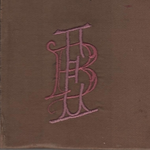 History of Parish Communities of the Russian Orthodox Church
History of Parish Communities of the Russian Orthodox Church
A.L. Beglov
Samizdat in the Archive of Secret Monastic Communities of the Vysoko-Petrovsky Monastery in Moscow (1920–1950s). To the Question of the Phenomenon of Church Samizdat
The article gives an overview of the monuments of church samizdat of the 1920–1950s, preserved in the archive of secret monastic communities of the Moscow Vysoko-Petrovsky Monastery. The chronological framework of the work was not chosen by chance. It was during this period that the Vysoko-Petrovsky communities retained a unified leadership, and the texts circulating in them characterise the reading circle not of individual believers, but of all communities. The author shows that thematically the samizdat component of the Vysoko-Petrovsky archive is divided into two unequal parts. In conclusion, the author reflects on the phenomenon of church samizdat. He suggests extending the chronological framework of the concept of samizdat to the entire Soviet period and draws attention to the fact that, apparently, church samizdat is the earliest example of samizdat of the Soviet era.
Publishing: 28/04/2024
How to cite: Beglov A.L. Samizdat in the Archive of Secret Monastic Communities of the Vysoko-Petrovsky Monastery in Moscow (1920–1950s). To the Question of the Phenomenon of Church Samizdat // Historical Courier, 2024, No. 2 (34), pp. 79–98. [Available online: http://istkurier.ru/data/2024/ISTKURIER-2024-2-06.pdf]
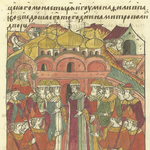 Orthodox Bishops and Problems of Church Administration
Orthodox Bishops and Problems of Church Administration
A.S. Usachev
Metropolitan Philip (Kolyschev) and Bishop of Kolomna Iosif
The article deals with the possible reasons of repressions against the cathedra of Kolomna in the period of oprichnina. The author supposes that there was the link between the bishop Iosif (1565–1569) and the metropolitan Philip (Kolychev) (1566–1568). The article shows that Iosif instead of the Krutickiy bishop helped metropolitan to govern the huge metropolitan’s area. The article is based on the chronicles, acts, memorial lists of victims of the Oprichnina, feed books and the books of donations of the Russian monasteries, descriptions of possessions, documents on the appointment of priests.
The study was supported by the Russian Science Foundation grant No. 20-18-00218, https://rscf.ru/project/20-18-00218/
Publishing: 28/04/2024
How to cite: Usachev A.S. Metropolitan Philip (Kolyschev) and Bishop of Kolomna Iosif // Historical Courier, 2024, No. 2 (34), pp. 99–113. [Available online: http://istkurier.ru/data/2024/ISTKURIER-2024-2-07.pdf]
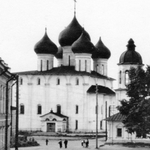 Orthodox Bishops and Problems of Church Administration
Orthodox Bishops and Problems of Church Administration
N.V. Bashnin
The Structure of the Vologda Bishop’s Court in the Last Quarter of the 17th Century (Based on the Materials of Account Books)
The article examines the account books of the Vologda Episcopal House of St. Sophia in the last third of the 17th century. It was possible to show that the Vologda Vladyka’s court included more than 90 people in 1677/78 and more than 100 in 1692/93. The most numerous group were armed servants. More than 400 rubles were spent from the treasury on salaries for bishops. An analysis of the sources showed that from the late 1670s to the early 1690s, the personnel of the employees largely changed.
Publishing: 28/04/2024
How to cite: Bashnin N.V. The Structure of the Vologda Bishop’s Court in the Last Quarter of the 17th Century (Based on the Materials of Account Books) // Historical Courier, 2024, No. 2 (34), pp. 114–132. [Available online: http://istkurier.ru/data/2024/ISTKURIER-2024-2-08.pdf]
 Orthodox Bishops and Problems of Church Administration
Orthodox Bishops and Problems of Church Administration
I.L. Mankova
Ritual Practices in the Space of a Diocesan City: The Meetings of Siberian Bishops in Tobolsk (17th – Early 18th Centuries)
Important events in the life of the main city of the Siberian diocese, Tobolsk, were the arrival of new bishops and the return of ruling bishops from long trips. The article examines the ritual of meeting Siberian bishops in Tobolsk in the 17th – early 18th centuries. The royal letters to Tobolsk administrators are analyzed. They regulated the meeting ceremony. It was established that the recommendations were of a general nature. A reconstruction of the ritual was carried out based on entries in the Siberian Chronicle and other sources, and the routes followed by the bishops from the entrance to the city to the St. Sophia Cathedral were determined. Its transformation throughout the 17th century is shown. This happened under the influence of the complex terrain and cultural landscape of Tobolsk, as well as the symbolic understanding of urban space.
Publishing: 28/04/2024
How to cite: Mankova I.L. Ritual Practices in the Space of a Diocesan City: The Meetings of Siberian Bishops in Tobolsk (17th – Early 18th Centuries) // Historical Courier, 2024, No. 2 (34), pp. 133–146. [Available online: http://istkurier.ru/data/2024/ISTKURIER-2024-2-09.pdf]
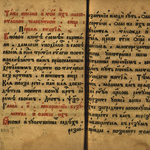 Intellectuals in the Life of the Russian Orthodox Church
Intellectuals in the Life of the Russian Orthodox Church
T.V. Panich
Church Writers of the Second Half of the 17th Century in the Struggle Against Schism
The article is based on the results of a study of the anti-Old Believers writings of church writers of the second half of the 17th century (Epiphany Slavinetsky, Simeon Polotsky, Athanasiy Kholmogorsky, Ignatiy Korsakov, etc.). The features of the struggle against schism in the second half of the 17th century are considered, the forms of organization of polemical discourse are revealed, the problematic and the main directions of criticism of the authors of these writings against the defenders of the “old faith”.
The article was made on the topic of the state assignment “The Past in the Manuscript Sources of the 16th–20th Centuries: Preservation and Development of Traditions” (FWZM-2024-0006).
Publishing: 28/04/2024
How to cite: Panich T.V. Church Writers of the Second Half of the 17th Century in the Struggle Against Schism // Historical Courier, 2024, No. 2 (34), pp. 147–155. [Available online: http://istkurier.ru/data/2024/ISTKURIER-2024-2-10.pdf]
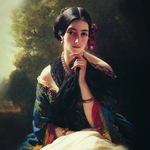 Intellectuals in the Life of the Russian Orthodox Church
Intellectuals in the Life of the Russian Orthodox Church
D.V. Dolgushin
From the History of Religious Quest of Russian Educated Society in the Second Quarter of the 19th Century: Leonilla Sayn-Wittgenstein
For the first time in Russian historiography, the article endeavors to address in detail the religious quests of Leonilla Ivanovna Sayn-Wittgenstein (1816–1918), a famous secular lady and activist in the Catholic movement. Particular attention in the article is paid to the period of circulation of L.I. Sayn-Wittgenstein into Catholicism. A previously unknown source is introduced into scientific circulation – the characteristics of L.I. Sayn-Wittgenstein, written by V.P. Davydov. The history of her relationship with Felix Dupanloup and other representatives of liberal Catholicism in France is described. An analysis of her views on Russia, expressed in correspondence with count Desbassyns de Richemont, is carried out.
The article was made on the topic of the state assignment “The Past in the Manuscript Sources of the 16th–20th Centuries: Preservation and Development of Traditions” (FWZM-2024-0006).
Publishing: 28/04/2024
How to cite: Dolgushin D.V. From the History of Religious Quest of Russian Educated Society in the Second Quarter of the 19th Century: Leonilla Sayn-Wittgenstein // Historical Courier, 2024, No. 2 (34), pp. 156–178. [Available online: http://istkurier.ru/data/2024/ISTKURIER-2024-2-11.pdf]
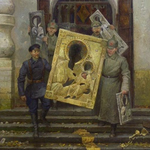 Periodical Printing in the History of the Russian Orthodox Church
Periodical Printing in the History of the Russian Orthodox Church
V.V. Pervushin
Image of the Russian Orthodox Church in the Pages of the Newspaper “Pravda” in 1922
The paper characterizes the image of the Russian Orthodox Church as documented in the 1922 publications of Pravda, the main press organ of the Russian Communist Party (of Bolsheviks). The author considers the content of the image of the Church, the methods of its construction, and the genres used for its presentation. Two images of the Orthodox Church created by the Bolsheviks to weaken the Church and ensure the campaign of seizure of valuables have been identified: an unambiguously negative and a discreetly positive one. The techniques used to create the image have been revealed, demonstrating that it was built upon contradictions, making it seem truthful.
The article was made on the topic of the state assignment “The Past in the Manuscript Sources of the 16th–20th Centuries: Preservation and Development of Traditions” (FWZM-2024-0006).
Publishing: 28/04/2024
How to cite: Pervushin V.V. Image of the Russian Orthodox Church in the Pages of the Newspaper “Pravda” in 1922 // Historical Courier, 2024, No. 2 (34), pp. 179–191. [Available online: http://istkurier.ru/data/2024/ISTKURIER-2024-2-12.pdf]
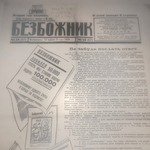 Periodical Printing in the History of the Russian Orthodox Church
Periodical Printing in the History of the Russian Orthodox Church
S.S. Boyko
The Newspaper Bezbozhnik as a Source on the History of Anti-Religious Propaganda (1922–1925)
The article is devoted to the anti-religious propaganda of the Soviet authorities on the pages of the newspaper Bezbozhnik in the period of 1922–1925. It analyses the reasons and political conditions for the creation of the newspaper, the main goals and objectives of its activities, its target audience. The general characteristics of the newspaper Bezbozhnik as a historical source are described, the main genres, rubrics, their quantitative ratio, periodicity and volume of the issue are highlighted. Particular attention is paid to the reports and notes “from the field”, received by the editorial office of the newspaper. A conclusion is made about the contradictory editorial policy of the newspaper during this period, its bias towards politicisation and gross simplification of religious life, ignoring the requirements of the authorities about the inadmissibility of an offensive tone towards the church and believers. The authors point out the potential scientific interest of the reports and notes of correspondents published in the newspaper and stored in archives in the context of studying Soviet religiosity in the 1920s.
The article was made on the topic of the state assignment “The Past in the Manuscript Sources of the 16th–20th Centuries: Preservation and Development of Traditions” (FWZM-2024-0006).
Publishing: 28/04/2024
How to cite: Boyko S.S. The Newspaper Bezbozhnik as a Source on the History of Anti-Religious Propaganda (1922–1925) // Historical Courier, 2024, No. 2 (34), pp. 192–203. [Available online: http://istkurier.ru/data/2024/ISTKURIER-2024-2-13.pdf]
 Liturgical and Singing Tradition of Russian Orthodoxy
Liturgical and Singing Tradition of Russian Orthodoxy
Yu.S. Belyankin
Unknown Sermon on the Day of the Great Martyr Nikita from the Time of Tsars Ioann Alekseevich and Peter Alekseevich
The article is devoted to the introduction into scientific circulation of the unknown text “The Sermon on the Day of the Great Martyr Nikita”, which is a church homily with elements of theatrical action. The “Sermon” was found in an encyclopedic manuscript from the bibliophile collection in Moscow, identified to date in the only copy of the end of the 17th century. Judging by historical realities, the text was written at almost the same time, i.e. in the 1680s. The manuscript with the text of the “Sermon”, as can be assumed, was created in court circles and contains other original unknown works of the late 17th century.
Publishing: 28/04/2024
How to cite: Belyankin Yu.S. Unknown Sermon on the Day of the Great Martyr Nikita from the Time of Tsars Ioann Alekseevich and Peter Alekseevich // Historical Courier, 2024, No. 2 (34), pp. 205–213. [Available online: http://istkurier.ru/data/2024/ISTKURIER-2024-2-14.pdf]
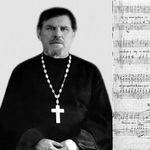 Liturgical and Singing Tradition of Russian Orthodoxy
Liturgical and Singing Tradition of Russian Orthodoxy
Е.А.Poletaeva
Music Manuhandwritten Scores of the Priest Peter Taratuta from the Rare Collection of the Library of the Yekaterinburg Theological Seminary (Part 1)
The publication presents for the first time a full scientific description of two manuscript sheet music collections of Archpriest Peter Taratuta (1909–1978) from the collection of the library of the Ekaterinburg Orthodox Theological Seminary (ETS RK 43208 and ETS RK 43211). According to the records, the scores with spiritual works by composers for church choirs were compiled by Archpriest Peter Taratuta from 1938 to 1945 in Lithuania and Ukraine. The appearance of musical scores was connected with the revival of traditional forms of church life in this period. The introduction of new musical sources into the scientific turnover will serve for further study of choral culture and traditions of church singing in the Urals, which developed thanks, among other things, to the existence of Peter Taratuta’s scores.
Publishing: 28/04/2024
How to cite: Poletaeva Е.А. Music Manuhandwritten Scores of the Priest Peter Taratuta from the Rare Collection of the Library of the Yekaterinburg Theological Seminary (Part 1) // Historical Courier, 2024, No. 2 (34), pp. 214–226. [Available online: http://istkurier.ru/data/2024/ISTKURIER-2024-2-15.pdf]
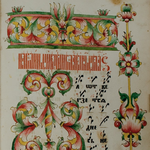 Liturgical and Singing Tradition of Russian Orthodoxy
Liturgical and Singing Tradition of Russian Orthodoxy
T.G. Kazantseva
From the Initial History of Field Research of the Liturgical-Singing Culture of the Old Believers of Altai (Based on Field Materials of Archaeographic Expeditions of the Institute of History, Philology and Philosophy of the Siberian Branch of the USSR Academy of Sciences in 1969)
Handwritten and audio materials, collected in the late 1960s archaeographic expeditions led by N.N. Pokrovsky and reflecting the state of the tradition of cult singing of the Old Believers of Altai in the specified period, are being introduced into scientific circulation. Audio recordings made in Barnaul and Biysk from representatives of the Chasovennye Сommunity are characterizing; information about the performers is publishing. It is noting that despite its fragmentary nature, the material collected by archaeographers is highly important for reconstructing the picture of the existence of the liturgical-singing culture of the Siberian Old Believers in the second half of the last century.
The article was prepared according to the plan of research work of the State Public Scientific and Technical Library of the Siberian Branch of the Russian Academy of Sciences, the project “Depository of Book Monuments of Siberia and the Far East: Identification, Digital Storage System and Access Organization for Research”, No. 122040600049-8.
Publishing: 28/04/2024
How to cite: Kazantseva T.G. From the Initial History of Field Research of the Liturgical-Singing Culture of the Old Believers of Altai (Based on Field Materials of Archaeographic Expeditions of the Institute of History, Philology and Philosophy of the Siberian Branch of the USSR Academy of Sciences in 1969) // Historical Courier, 2024, No. 2 (34), pp. 228–236. [Available online: http://istkurier.ru/data/2024/ISTKURIER-2024-2-16.pdf]
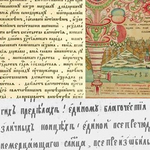 Book Culture and History of the Old Believers
Book Culture and History of the Old Believers
E.V. Belyakova
Transformation of the Concept of “Piety” in Russian Culture of the 17th Century
The article shows how the concept of piety changed in the 17th century. In printed Moscow publications from the 30s of the 17th century the king’s piety was associated with book correction. In Kiev publications the concept of a “pious reader” and a “pious publisher” appeared, and they also talked about “zealots of piety.” The report also raises the question of how correct the use of the term “circle of zealots of piety” is, and shows how the concept of “ancient piety” developed in the tradition of opponents of church reforms. In the Vyg literary tradition, “suffering for piety” became a central concept.
Publishing: 28/04/2024
How to cite: Belyakova E.V. Transformation of the Concept of “Piety” in Russian Culture of the 17th Century // Historical Courier, 2024, No. 2 (34), pp. 237–252. [Available online: http://istkurier.ru/data/2024/ISTKURIER-2024-2-17.pdf]
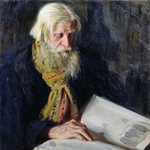 Book Culture and History of the Old Believers
Book Culture and History of the Old Believers
L.D. Demidova
Appeal to the Plots from the Historical past in the Writings of the “Founding Fathers” of the Old Believers and Their “Historical Erudition”
The article analyzes the historical subjects used by the early Old Believers in their polemical writings against church reforms initiated by Patriarch Nikon. The potential of this material for understanding the nature and specificity of the knowledge about the past that the founders of the Old Believer movement had was shown. It was revealed that historical subjects are often borrowed from works, the main function of which was not related to the transmission of purely historical knowledge. It is concluded that they can be considered as full-fledged sources of more or less mass (to the extent that this was possible by the standards of the 17th century) knowledge about the past, despite the fact that works of the historical genre have long and firmly taken their place in ancient Russian literature.
The article was made on the topic of the state assignment “The Past in the Manuscript Sources of the 16th–20th Centuries: Preservation and Development of Traditions” (FWZM-2024-0006).
Publishing: 28/04/2024
How to cite: Demidova L.D. Appeal to the Plots from the Historical past in the Writings of the “Founding Fathers” of the Old Believers and Their “Historical Erudition” // Historical Courier, 2024, No. 2 (34), pp. 253–268. [Available online: http://istkurier.ru/data/2024/ISTKURIER-2024-2-18.pdf]
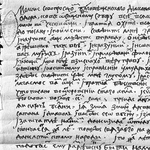 Book Culture and History of the Old Believers
Book Culture and History of the Old Believers
L.V. Titova
On the Little-Known Work of Deacon Fyodor Ivanov “On the Questioning of the Wicked Authorities” and Its Sources
The article is devoted to the publication of a little-known Old Believer work by Deacon Fуodor “On Questioning the Wicked Authorities”. The introduction describes the oeuvres used by the author during its creation. It is concluded that the text “Praying with a Question…” that he had previously written, in which the ideas of Spiridon Potemkin were developed, was included in the message “On Questioning the Wicked Authorities” in fragments verbatim. A significant difference in the text is its anti-government orientation, which is clearly evident already in the title, as well as in the indication of rejection of the listed innovations introduced into ritual and liturgical practice as a result of church reform, and in a bold reproach to the authorities.
The article was made on the topic of the state assignment “The Past in the Manuscript Sources of the 16th–20th Centuries: Preservation and Development of Traditions” (FWZM-2024-0006).
Publishing: 28/04/2024
How to cite: Titova L.V. On the Little-Known Work of Deacon Fyodor Ivanov “On the Questioning of the Wicked Authorities” and Its Sources // Historical Courier, 2024, No. 2 (34), pp. 269–275. [Available online: http://istkurier.ru/data/2024/ISTKURIER-2024-2-19.pdf]
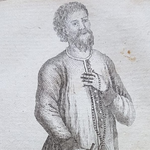 Book Culture and History of the Old Believers
Book Culture and History of the Old Believers
N.S. Gurianova
Community Libraries as a Source for Studying Book Culture of the Old Believers
The article is devoted to the analysis of descriptions of the library of the Old Believer Vyg-Leksinsky community. This made it possible to demonstrate their capabilities when used as a source for studying the book culture of the Old Believers. It is concluded that the composition of the community library, considered in the context of the creative heritage of the authors using this library, makes it possible to deepen our knowledge about this religious and social movement. The descriptions of the Vyg-Leksinsky library testify to the highest level of book culture, which combined the characteristic attitude of the early period, close to the sacralization of the book, with a completely scientific one – to the text of monuments.
The article was made on the topic of the state assignment “The Past in the Manuscript Sources of the 16th–20th Centuries: Preservation and Development of Traditions” (FWZM-2024-0006).
Publishing: 28/04/2024
How to cite: Gurianova N.S. Community Libraries as a Source for Studying Book Culture of the Old Believers // Historical Courier, 2024, No. 2 (34), pp. 276–287. [Available online: http://istkurier.ru/data/2024/ISTKURIER-2024-2-20.pdf]
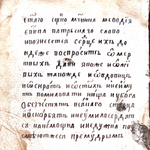 Book Culture and History of the Old Believers
Book Culture and History of the Old Believers
A.A. Kryukova
“Apocalypse of Pseudo-Methodius” in the Range of Reading of the Pechora Peasants of the Old Believers
The article is devoted to the study of the “Apocalypse of Pseudo-Methodius”, one of the oldest eschatological works, and his Pechora copies, which read excerpts mainly from the second Slavic translation of the monument. We compared the Pechora copies with each other, as well as with the earlier copy of the second Slavic translation, determined the degree of their substantial and textual proximity and revealed their differences, and also suggested whether the Pechora copies could have a common protograph.
Publishing: 28/04/2024
How to cite: Kryukova A.A. “Apocalypse of Pseudo-Methodius” in the Range of Reading of the Pechora Peasants of the Old Believers // Historical Courier, 2024, No. 2 (34), pp. 288–297. [Available online: http://istkurier.ru/data/2024/ISTKURIER-2024-2-21.pdf]
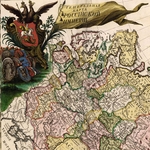 Scientific Life
Scientific Life
V.O. Iakovlev
“Retrospective of the Russian Scientific Cartographic Thought: Anniversary Exhibition in the Department of Cartography of the National Library of Russia (to the 300th Anniversary of the Founding of the Academy of Sciences and the 285th Anniversary of the Foundation of the Academic Geographical Department)
The article is devoted to the anniversary exhibition, organized in the Department of Cartography of the National Library of Russia. It is dedicated to the 300th anniversary of the founding of the Academy of Sciences and the 285th anniversary of the establishment of the Geographical Department of the Academy of Sciences.
Publishing: 28/04/2024
How to cite: Iakovlev V.O. “Retrospective of the Russian Scientific Cartographic Thought: Anniversary Exhibition in the Department of Cartography of the National Library of Russia (to the 300th Anniversary of the Founding of the Academy of Sciences and the 285th Anniversary of the Foundation of the Academic Geographical Department) // Historical Courier, 2024, No. 2 (34), pp. 298–304. [Available online: http://istkurier.ru/data/2024/ISTKURIER-2024-2-22.pdf]



